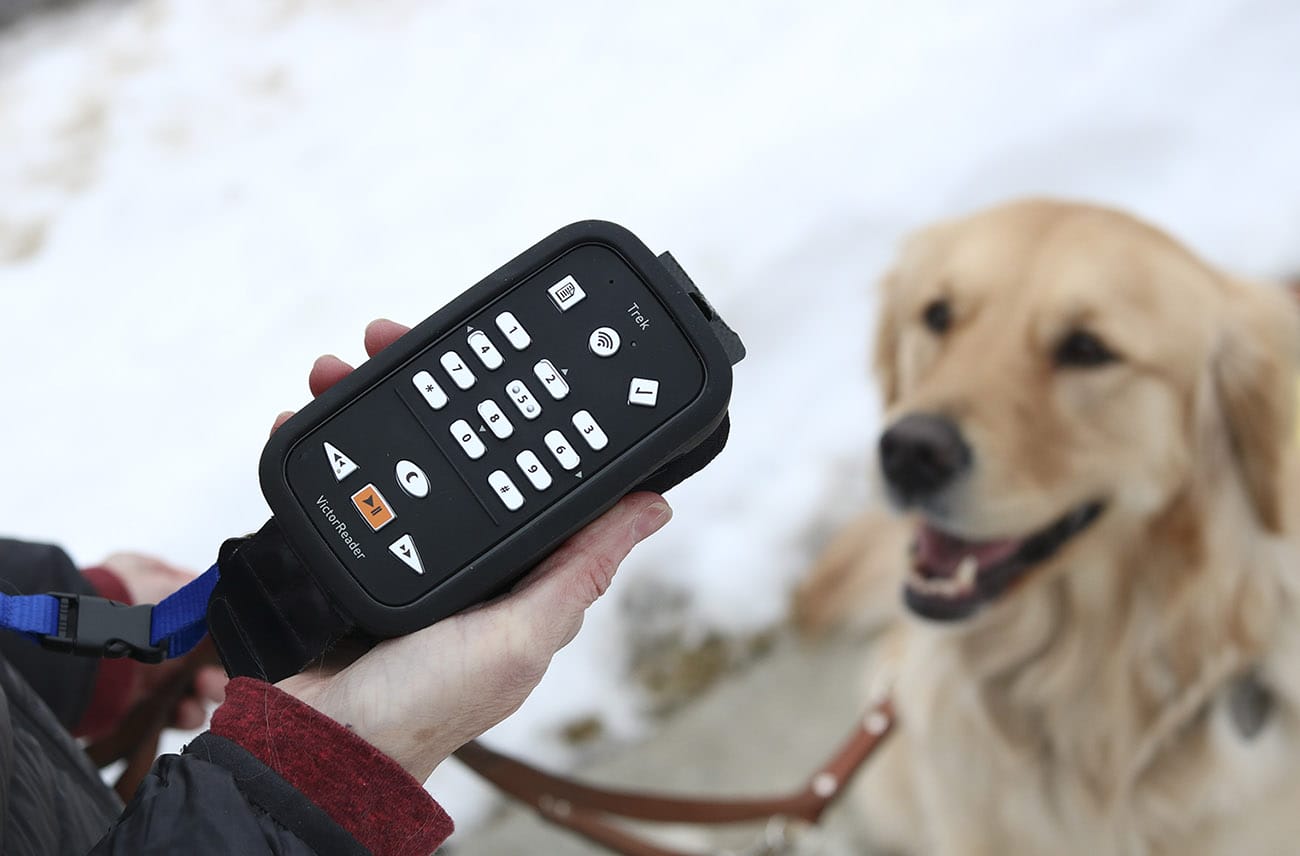
Recently, we upgraded the GPS that we provide to U.S. and Canadian guide dog clients. We are now using HumanWare’s Victor Reader Trek. “The Victor Reader Trek combines the cutting-edge GPS technology of the Trekker Breeze with the innovative media reading and playback capabilities of the Victor Reader Stream,” says Rick Piper, Vice-President Sales – U.S. for HumanWare. So, our clients will use the device to help them navigate to their location and they can listen to audio books or music along the way.
Other benefits of the Victor Reader Trek are that it has space for lectures and large country maps to be uploaded. Past devices only fit four regional maps (there are 20+ for the U.S.). Now all Trek devices we issue include the entirety of the U.S. and Canada. Trek also equips our clients for indoor navigation since it is iBeacon*-ready and will support the Galileo** orientation system for better accuracy.
Our continued commitment to GPS technology is based on the positive results reported by our clients. 90% or more agreed to the following statements regarding how GPS devices are helpful: establishing, maintaining or re-establishing orientation, planning a travel route in an unfamiliar area, knowing when they reached their destination, finding businesses along unfamiliar routes, and becoming a more capable, confident and relaxed traveler.
Additionally, an astonishing 70% of users reported increased travel in or outside their neighborhood. This is incredibly vital as it impacts an individual’s ability to find work, connect with their community and maintain a healthy lifestyle.
We are proud to have been the first guide dog organization in the U.S. to include GPS in our programming. To date, we have issued over 1,600 GPS devices to clients.
* iBeacon is the name for Apple’s technology standard that allows a device to receive signals from beacons in the user’s location to supply information about the local environment.
** Galileo is a global navigation satellite system currently used in Europe to provide highly accurate global positioning service.

